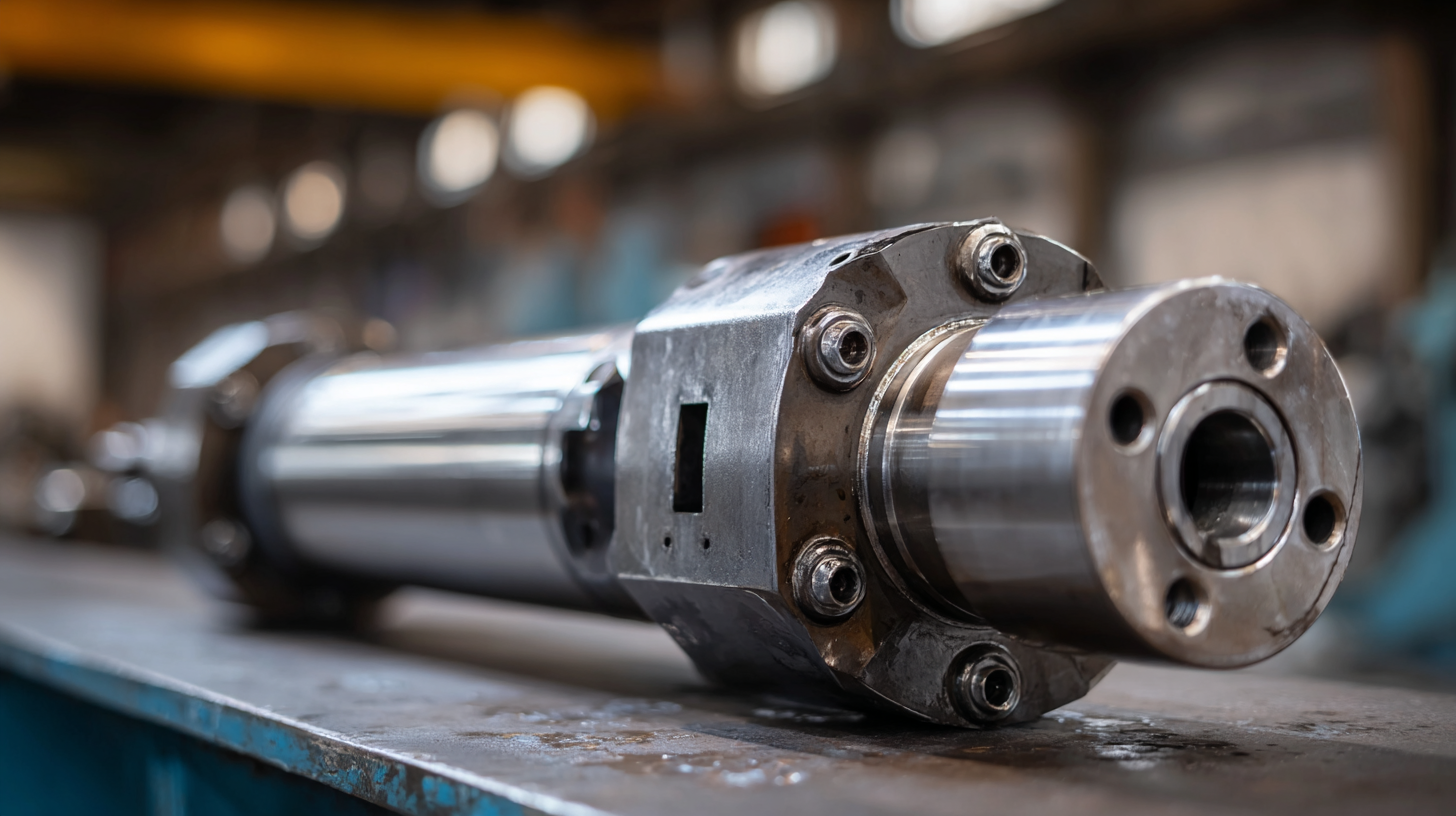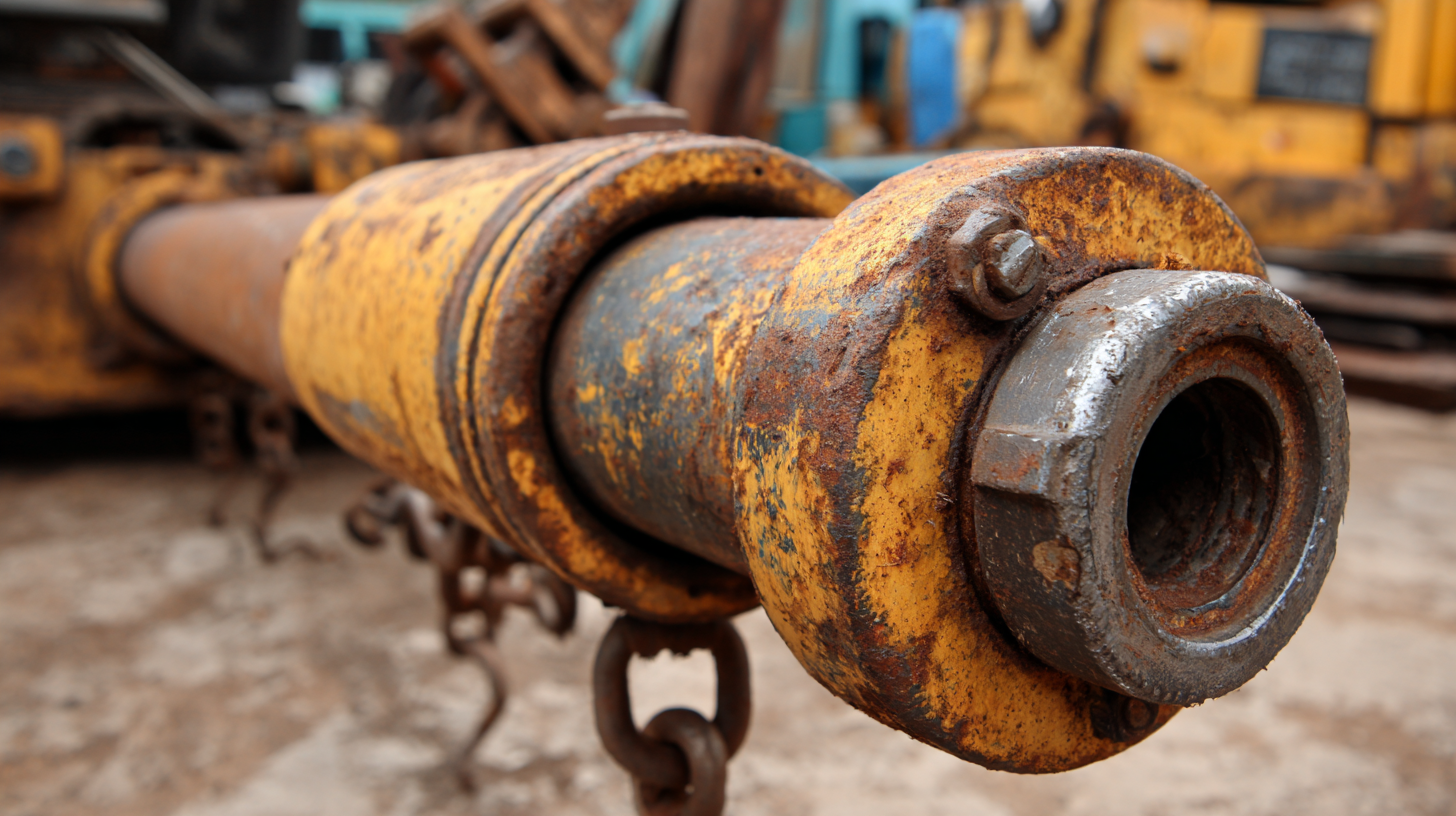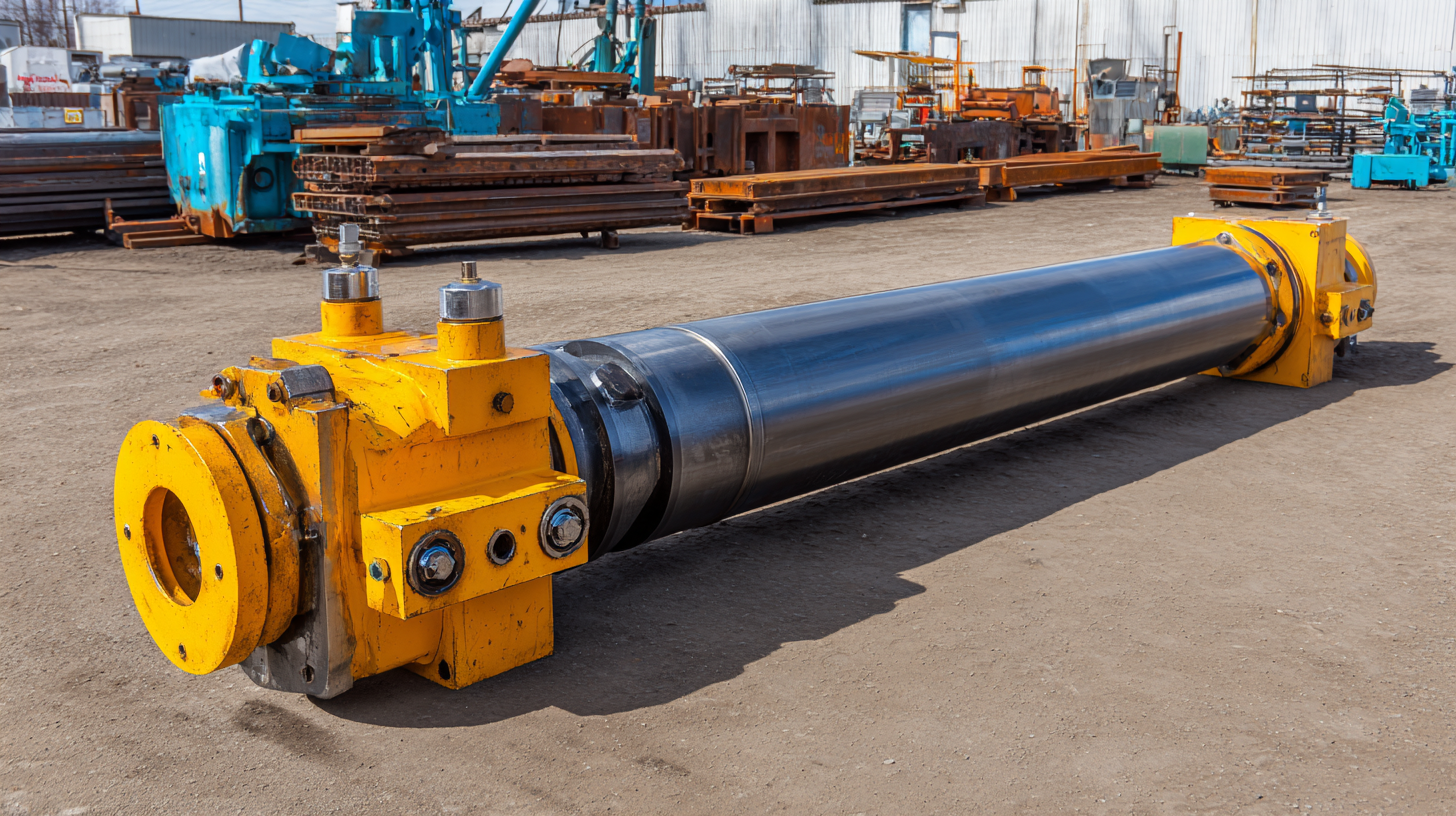
Ultimate Guide to Choosing the Best Hydraulic Oil Cylinder for Your Needs
In the fast-evolving landscape of industrial machinery, the significance of selecting the appropriate Hydraulic Oil Cylinder cannot be overstated. According to a recent market report by Grand View Research, the global hydraulic cylinder market is expected to reach $22.95 billion by 2025, driven by advancements in technology and increasing demand from construction and manufacturing sectors. As industries strive to enhance operational efficiency and reduce maintenance costs, understanding the vital role that hydraulic oil plays—enabling precision, power, and reliability—has become paramount. This guide aims to navigate you through the critical considerations in choosing the best hydraulic oil cylinder tailored to your specific needs, ensuring optimal performance and longevity in your hydraulic systems.

Understanding Hydraulic Oil Cylinder Basics: Components and Functionality
 When it comes to hydraulic oil cylinders, understanding their basic components and functionality is crucial for making an informed choice. A hydraulic cylinder typically consists of a cylinder body, piston, piston rod, end caps, and hydraulic fluid. The cylinder body houses the piston and is sealed to prevent leaks, while the piston converts hydraulic pressure into mechanical force. The piston rod extends from the cylinder, transferring this force to the machine or tool in use. Each part plays a vital role in ensuring optimal performance and reliability.
When it comes to hydraulic oil cylinders, understanding their basic components and functionality is crucial for making an informed choice. A hydraulic cylinder typically consists of a cylinder body, piston, piston rod, end caps, and hydraulic fluid. The cylinder body houses the piston and is sealed to prevent leaks, while the piston converts hydraulic pressure into mechanical force. The piston rod extends from the cylinder, transferring this force to the machine or tool in use. Each part plays a vital role in ensuring optimal performance and reliability.
Tips: Always check the compatibility of hydraulic fluid with the cylinder materials to avoid damage and ensure smooth operation. Additionally, regular maintenance and inspections can prevent failures and extend the lifespan of your hydraulic cylinders.
Understanding how these components work together allows you to choose the right hydraulic oil cylinder for your specific application. It's also important to consider the cylinder's capacity, stroke length, and mounting options, as these factors directly impact performance. Ensure that you assess your needs thoroughly to select a cylinder that aligns with your operational requirements.
Tips: Consider consulting with a hydraulic expert when selecting a cylinder, especially for specialized applications. They can provide insights into pressure ratings and help you choose a design that maximizes efficiency and safety.
Key Factors to Consider When Selecting a Hydraulic Oil Cylinder
When selecting a hydraulic oil cylinder, it's essential to consider several key factors to ensure optimal performance for your specific applications. According to recent market analysis, the global hydraulic cylinder market, valued at USD 14.3 billion in 2021, is projected to reach USD 18.3 billion by 2027, indicating robust growth in this sector. This growth highlights the increasing demand for efficient and reliable hydraulic systems across various industries.
One important factor to consider is the operational environment. Selecting a hydraulic oil cylinder that can withstand specific temperature ranges, pressure levels, and external conditions is crucial. For example, cylinders used in outdoor settings might require additional sealing and protective coatings against environmental factors. **Tip:** Always consult manufacturer specifications to match the cylinder’s capabilities with the operating conditions.
Another vital consideration is the type of fluid being used. The hydraulic oil not only affects the system's efficiency but also the lifespan of the cylinder itself. Different oil types can have varying viscosities and additive packages that impact performance. **Tip:** Regularly monitor and maintain your fluid to ensure optimal hydraulic performance and longevity of the oils used. Understanding these fundamental aspects can significantly impact the effectiveness and reliability of your hydraulic systems.
Ultimate Guide to Choosing the Best Hydraulic Oil Cylinder for Your Needs
| Dimension | Type | Capacity (Ton) | Bore Size (mm) | Stroke Length (mm) | Weight (kg) | Price ($) |
|---|---|---|---|---|---|---|
| 50 x 100 | Single Acting | 5 | 50 | 100 | 12 | 150 |
| 80 x 150 | Double Acting | 10 | 80 | 150 | 18 | 250 |
| 100 x 200 | Single Acting | 15 | 100 | 200 | 25 | 350 |
| 125 x 250 | Double Acting | 20 | 125 | 250 | 30 | 450 |
| 150 x 300 | Single Acting | 25 | 150 | 300 | 35 | 600 |
Comparative Analysis: Different Types of Hydraulic Oil Cylinders Available
When selecting a hydraulic oil cylinder, understanding the comparative characteristics of various types is crucial for optimizing performance in applications ranging from construction to robotics. The global hydraulic cylinder market was valued at approximately USD 14.3 billion in 2021 and is projected to expand to USD 18.3 billion by 2027, highlighting the burgeoning demand for efficient hydraulic solutions. Key distinctions lie between single-acting and double-acting cylinders; the former utilizes fluid pressure in one direction while the latter operates bi-directionally, enabling more versatile applications in machinery.
Furthermore, advancements in hydraulic fluid power systems have prompted improvements in energy efficiency. For instance, a variable displacement axial piston pump is instrumental in minimizing power losses by adjusting its output in real time. This is particularly relevant for systems aiming to enhance their overall energy economics—addressing both performance and emissions. By integrating these sophisticated technologies, industries can significantly improve the efficiency of their hydraulic systems, making informed choices when selecting the best hydraulic oil cylinder tailored to their specific needs.
Comparative Analysis of Different Types of Hydraulic Oil Cylinders
Tips for Maintaining Your Hydraulic Oil Cylinder for Longevity
When it comes to ensuring the longevity of hydraulic oil cylinders,
regular maintenance and inspection are paramount. Establishing a preventive maintenance plan can significantly
extend the lifespan of these critical components. Research indicates that periodic checks can reduce the likelihood
of major mechanical failures by up to 30%. For hydraulic breakers, routine
maintenance is essential; it involves examining hoses, fittings, seals, and the hydraulic fluid itself to prevent leaks
and ensure optimal performance.
Maintaining hydraulic systems also involves monitoring fluid levels and replacing the oil as per the manufacturer's
recommendations. Using high-quality hydraulic fluids, such as those designed specifically for your equipment type,
can enhance performance and protect against wear. For instance, specialized hydraulic oils can improve efficiency
by ensuring the system operates cleanly and effectively, which is vital for heavy machinery
used in demanding environments. Investing time in understanding maintenance best practices not only keeps your
hydraulic oil cylinders functioning well but also contributes to overall operational efficiency and cost savings.
Why Choosing Quality Matters: Insights from Top Chinese Manufacturers
When selecting a hydraulic oil cylinder, the importance of quality cannot be overstated. Top Chinese manufacturers are leading the way with their advanced engineering processes and stringent quality control measures. Their commitment to high standards ensures that their cylinders not only provide the required performance but also enhance the overall efficiency of hydraulic systems. By opting for quality hydraulic oil cylinders, users reduce the risks of premature failure and costly downtimes, which can significantly impact industrial operations.

Moreover, investing in high-quality products from reputable manufacturers translates to better reliability and durability. These cylinders are designed to endure extreme pressures and harsh environmental conditions, making them ideal for a variety of applications. Chinese manufacturers often utilize premium materials and innovative designs, which boost the overall performance and longevity of the cylinders. Thus, understanding the vital role that quality plays in hydraulic oil cylinder selection is essential for anyone looking to optimize their operations and ensure smooth and efficient machinery performance.
